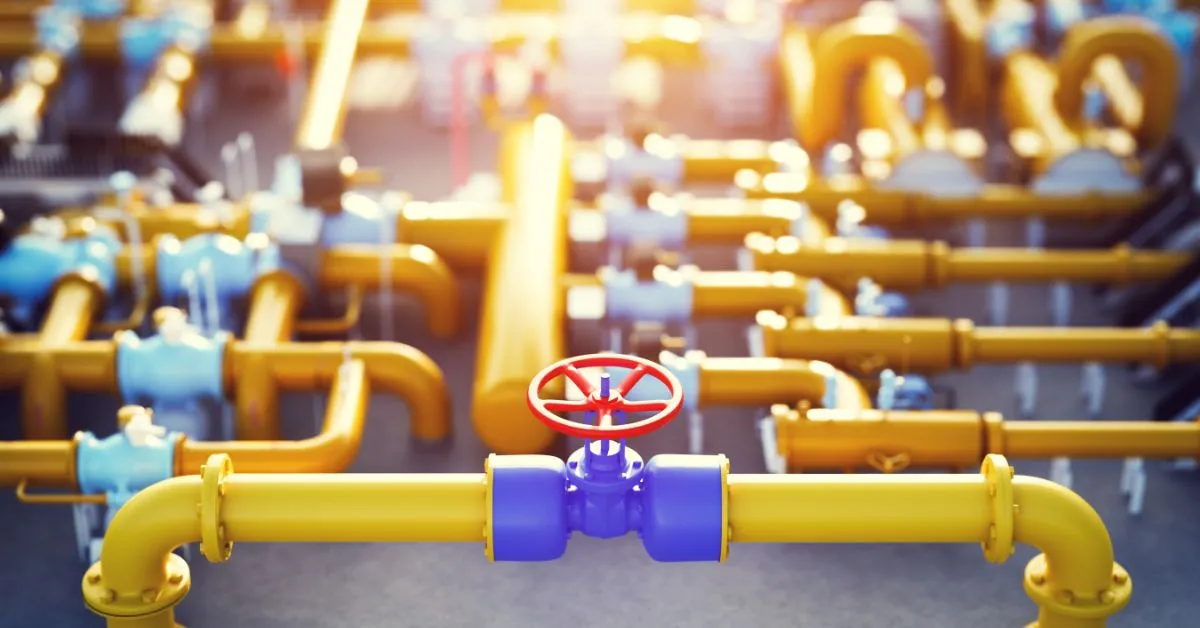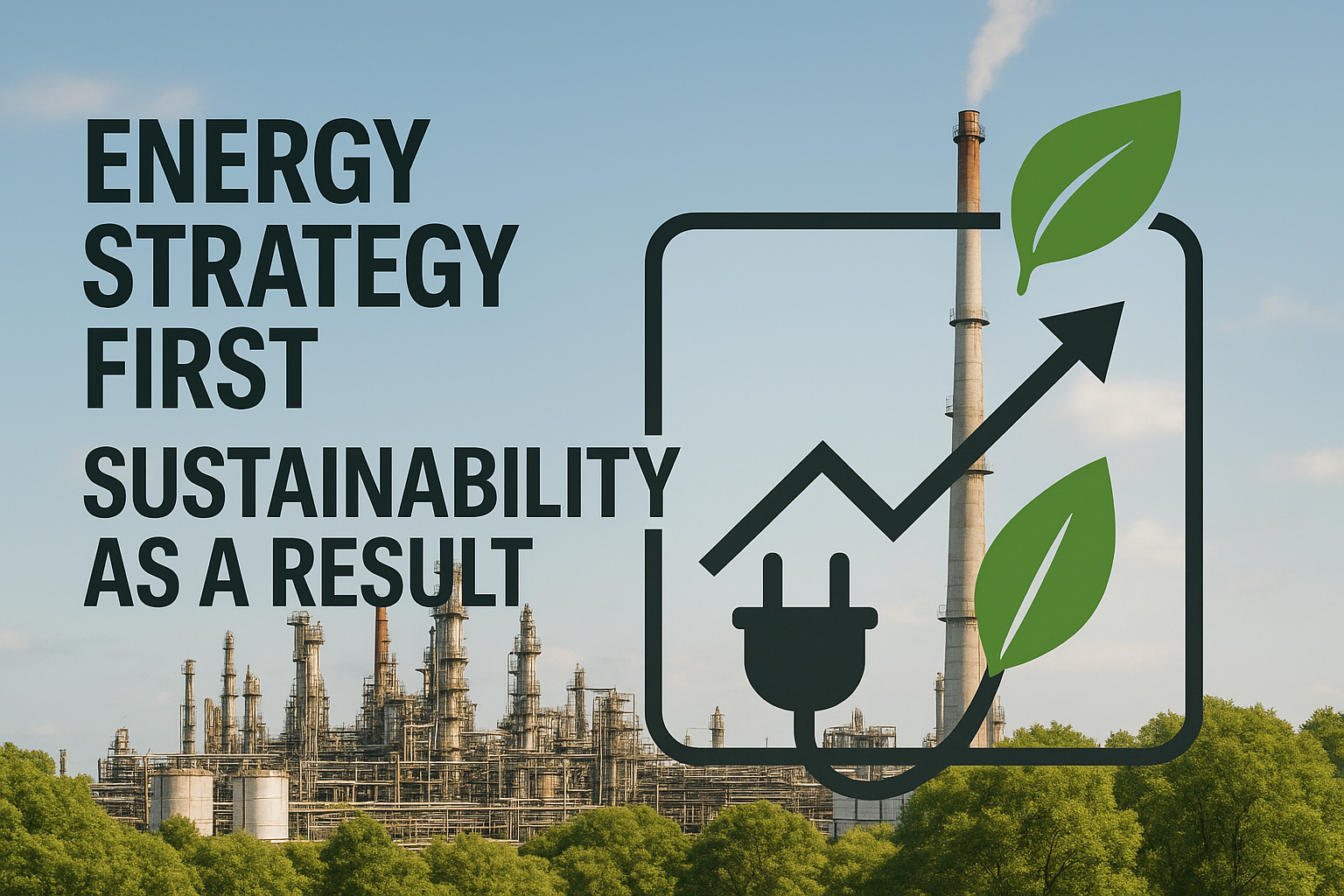Even the latest combined-cycle units convert up to 64% of the fuel’s energy into electricity, yet the rest still leaves the stack as waste heat. Trimming heat rate by just one percent can save thousands annually, money that goes straight to the bottom line. Manual tuning and open-loop logic rarely keep pace with shifting fuel quality, weather, or minute-by-minute load swings, so efficiency erodes and emissions rise.
Closed-loop control flips that script. By reading live sensor data and writing fresh setpoints every few seconds, it squeezes more work from every Btu while keeping permits intact. The capabilities that follow explain how this real-time feedback loop transforms natural-gas power-plant performance.
Optimize Combustion in Real Time for Peak Heat Rate
When the fuel-to-air mix drifts even slightly, heat rate climbs and fuel costs follow. Closed-loop AI keeps that balance on target by adjusting the feedback loop in real-time. Heated exhaust gas oxygen sensors feed live combustion data to the control logic, which immediately trims fuel or air to hold the ideal excess-oxygen band, well before operators could react manually.
Minimum-selector logic chooses the leanest safe fuel setting, preventing flame-out while maximizing every Btu. This approach addresses a common challenge in natural gas plants—maintaining optimal efficiency while operating within strict safety parameters.
Because the system continuously balances CO and NOx limits against efficiency targets, plants stay compliant without the usual giveaway that comes from running with excessive safety margins. This precision becomes especially valuable during peak demand periods when every fraction of efficiency improvement directly impacts profitability.
Adapt to Load Changes Without Efficiency Losses
Building on this combustion optimization foundation, closed-loop systems excel when grid demands fluctuate rapidly. Even modern gas turbines can slip in heat rate as operators scramble to retune excess air and firing temperature during ramping events.
Advanced control eliminates that lag by recalculating optimal setpoints from low load to full load in seconds, then writing them directly to the system. Continuous sensor streams—particularly crank and cam position signals—provide the real-time feedback needed to keep shaft speed and turbine firing temperature locked on target, regardless of demand swings.
Adjustments arrive before the combustion envelope drifts, letting you chase price spikes without the usual efficiency penalty. The turbine tracks renewable-driven fluctuations smoothly, avoiding the over- or undershoots that waste fuel and push emissions toward permit limits.
Balance Multiple Variables Simultaneously
While individual parameter optimization delivers solid gains, the real breakthrough comes from managing multiple variables in concert. Traditional advanced process control (APC) loops chase one variable at a time—exhaust temperature, excess oxygen, or turbine pressure—leaving operators to juggle trade-offs manually.
Closed-loop AI moves beyond that limitation. Deep learning and reinforcement learning models absorb thousands of live signals, mapping nonlinear interactions among combustion, steam cycle efficiency, and stack emissions.
Within seconds, the platform calculates an optimal compromise and writes new setpoints, synchronously adjusting fuel valves, burner tilts, feedwater flow, and duct-burner firing instead of nudging them in isolation.
Built-in validation reviews every move against equipment limits, safety interlocks, and permit boundaries, so you capture lower heat rate and tighter compliance without risking hardware or reliability.
Respond to Ambient Conditions Automatically
Environmental factors add another layer of complexity to this optimization challenge. Summer humidity swings can reduce a gas turbine’s efficiency when combustion settings remain fixed, yet many plants still rely on seasonal retuning to cope with weather fluctuations. Advanced control systems continuously read temperature, pressure, and moisture data, transforming every small change in ambient conditions into real-time inputs rather than lingering efficiency penalties.
High-speed feedback from exhaust temperature sensors guides inlet-guide-vane angles, cooling-water flow, and duct-burner firing strategies, helping restore lost output before operators observe trends in plant data. As these models learn each turbine’s response characteristics, they maintain firing temperatures near optimal points throughout the year without manual intervention.
By modulating fuel and air to keep hot-section metals within safe operating limits, these systems protect equipment life while capturing every available megawatt, even during challenging ambient conditions.
Minimize Emissions While Maximizing Output
Environmental compliance presents yet another optimization constraint that intelligent control systems handle seamlessly. Rather than throttling megawatts to stay within emission limits, these platforms read live data from oxygen, NOx, and CO probes to recalculate the fuel-air mix in real-time.
This approach holds emissions at low levels while sustaining full firing temperature. Continuous feedback from heated exhaust gas oxygen units lets the model cut excess air instead of relying on conservative cushions that waste heat and raise stack losses.
Because the controller adjusts within seconds, plants can avert the over-correction common with manual tuning, keeping CO, unburned hydrocarbons, and turbine temperature all balanced—even as ambient conditions or load requirements change. This automatic governance helps plants meet tightening regulations while protecting revenue streams.
Maintain Consistent Performance Across All Shifts
Beyond technical optimization, intelligent control systems address the human element in plant operations. These systems provide consistent optimization that maintains targets regardless of which operators are on shift, eliminating the variability that affects many control rooms. Plants using this approach report steadier output and fewer manual overrides during transitions.
The same AI models serve as training simulators, allowing new hires to practice scenarios in a virtual environment before working with live equipment. This reduces onboarding time while building confidence through hands-on experience with virtual models that mirror actual plant behavior.
With transparent recommendations backed by clear reasoning, experienced operators can test ideas and transfer knowledge to incoming shifts. This creates a collaborative environment where AI supports rather than replaces human decision-making, fostering a data-driven culture that addresses the industry’s skills gap while preserving essential expertise for safe, efficient operations.
Predict and Prevent Efficiency Losses
The most sophisticated advantage of these systems lies in their predictive capabilities. Minor shifts in combustion temperature, compressor surge margin, or sensor calibration can quietly add percentage points to a plant’s heat rate.
Advanced AI monitors thousands of data tags and compares them against learned performance baselines, flagging early signs of fouling or drift before they become costly derates. This monitoring capability actively corrects deviations as they emerge, helping maintain optimal performance.
Once a deviation is confirmed, the platform recommends targeted maintenance, enabling plants to shift work from reactive shutdowns to planned interventions. Plants moving to condition-based scheduling typically report fewer forced outages and longer run lengths. Continuous learning helps keep models aligned with real operating conditions, while automatic setpoint corrections compensate for gradual wear, helping turbines maintain optimal efficiency even between overhauls.
Transform Plant Performance Starting Now
The integration of intelligent control systems in natural gas power plants delivers transformative advantages that extend far beyond simple automation. Improvements in heat rate while simultaneously reducing emissions translate into significant annual savings for large facilities, enhanced grid competitiveness, and stronger environmental compliance.
These systems represent more than incremental upgrades; they’re becoming essential infrastructure for plants that must balance efficiency, emissions, and reliability in increasingly dynamic energy markets.
As renewable penetration drives more frequent cycling and tighter operating margins, the ability to optimize multiple variables simultaneously while predicting maintenance needs becomes a competitive necessity rather than a luxury. For operators seeking sustained performance advantages, embracing closed-loop control technology offers a clear path to operational excellence. Schedule your AIO expect lead assessment to learn how your plant can move toward greater efficiency.




